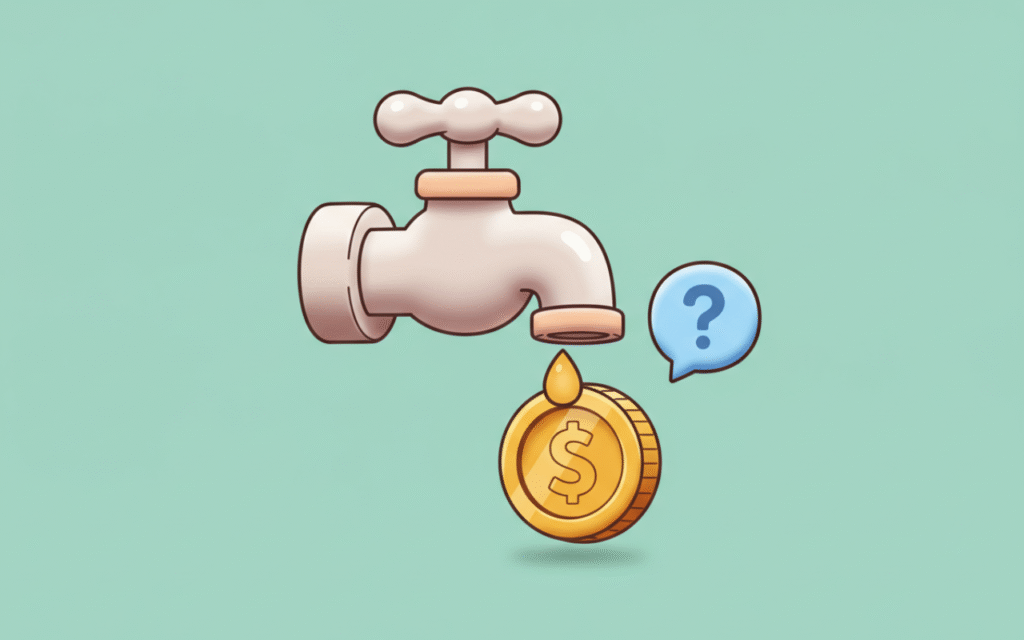Cryptocurrency has become a buzzing topic in the financial world, and with it come some fascinating concepts, one of which is the “crypto faucet“. If you’ve ever stumbled upon this term and wondered what it means, don’t worry, you’re not alone. In this post, we’ll break it down in simple terms, explore how it works, and address the big question, is it safe?

What Is a Crypto Faucet?
A crypto faucet is essentially a platform or website that gives away small amounts of cryptocurrency for free. Yes, you read that right free crypto. The name “faucet” comes from the idea of dripping water from a tap. Similarly, these platforms “drip” tiny amounts of crypto into your wallet as a reward for completing simple tasks.
The concept was first introduced to help spread awareness and encourage people to explore cryptocurrencies like Bitcoin when they were still new and unfamiliar. Today, faucets are still around, offering small rewards in various cryptocurrencies like Bitcoin (BTC), Ethereum (ETH), Dogecoin (DOGE), and more.
How Does a Crypto Faucet Work?
→ Crypto faucets are super easy to use. Here’s a quick rundown of how they typically work:
- Sign Up or Log In: Most faucets require you to create an account or log in with your crypto wallet address.
- Complete Tasks: To claim your free crypto, you’ll need to complete simple tasks. These tasks can include:
- Solving captchas
- Watching ads or videos
- Playing mini-games
- Clicking on specific links
- Filling out surveys
- Claim Your Reward: Once you’ve completed the task, the faucet will send a small amount of cryptocurrency to your wallet or an account balance on the platform.
- Withdraw Your Crypto: When you’ve accumulated enough rewards to meet the platform’s minimum withdrawal threshold, you can transfer the funds to your personal crypto wallet.
Keep in mind, these rewards are usually very small, fractions of a coin known as “satoshis” (for Bitcoin) or equivalent tiny units for other cryptocurrencies. So, while it’s fun, don’t expect to get rich overnight.
Are Crypto Faucets Safe?
→ Now, let’s address the elephant in the room: safety. While many crypto faucets are legitimate and harmless, there are some risks you should be aware of:
- Scams and Fraudulent Sites: Unfortunately, not all faucets are trustworthy. Some may promise rewards but never actually pay out. Always research a faucet’s reputation before using it.
- Malware Risks: Be cautious about faucets that require you to download software or apps. Some could contain malware designed to steal your personal information or crypto.
- Data Privacy: Some faucets might collect your personal data or bombard you with spam emails after you sign up. Always check their privacy policy and avoid sharing sensitive information.
- Time Investment: While faucets are free, they can be time-consuming. The rewards are so small that the time spent completing tasks might not be worth it for everyone.
Tips for Using Crypto Faucets Safely
→ If you’re intrigued by the idea of earning free crypto through faucets, here are some tips to keep your experience safe and enjoyable:
- Stick to Reputable Faucets: Use well-known platforms with positive reviews from the crypto community.
- Use a Dedicated Wallet: Create a separate wallet specifically for faucet earnings to protect your main funds.
- Avoid Downloads: Don’t download apps or software from unverified sources.
- Be Patient: Remember that faucets are more about having fun and learning than making big profits.
Conclusion
Crypto faucets can be a fun way to dip your toes into the world of cryptocurrency without any financial risk. They’re perfect for beginners who want to learn more about digital currencies while earning small rewards along the way. However, like anything online, it’s essential to approach them with caution and do your research before diving in.
So, if you’re curious about crypto and have some spare time on your hands, why not give a faucet a try? Just remember to stay safe and manage your expectations, those little crypto drips might not make you rich, but they can certainly add up over time.


